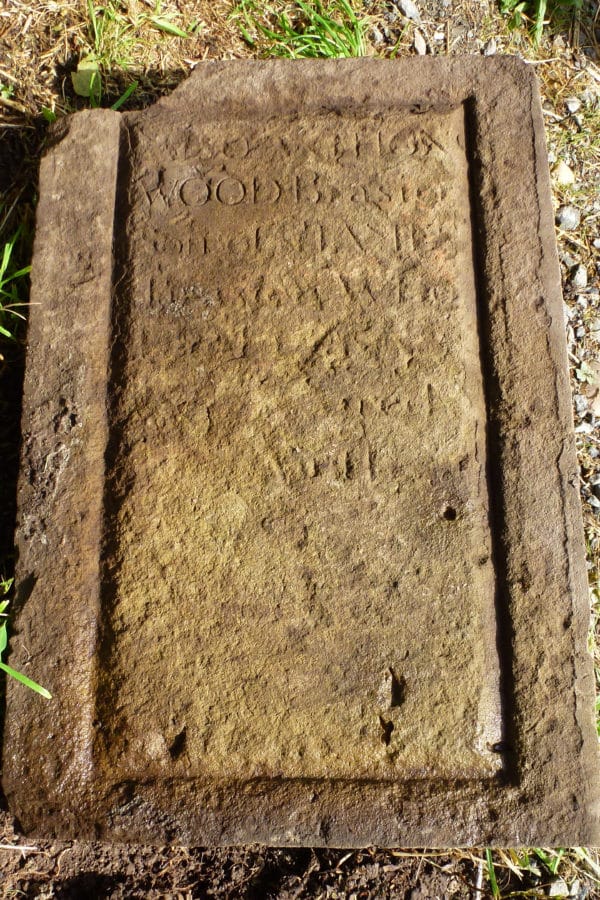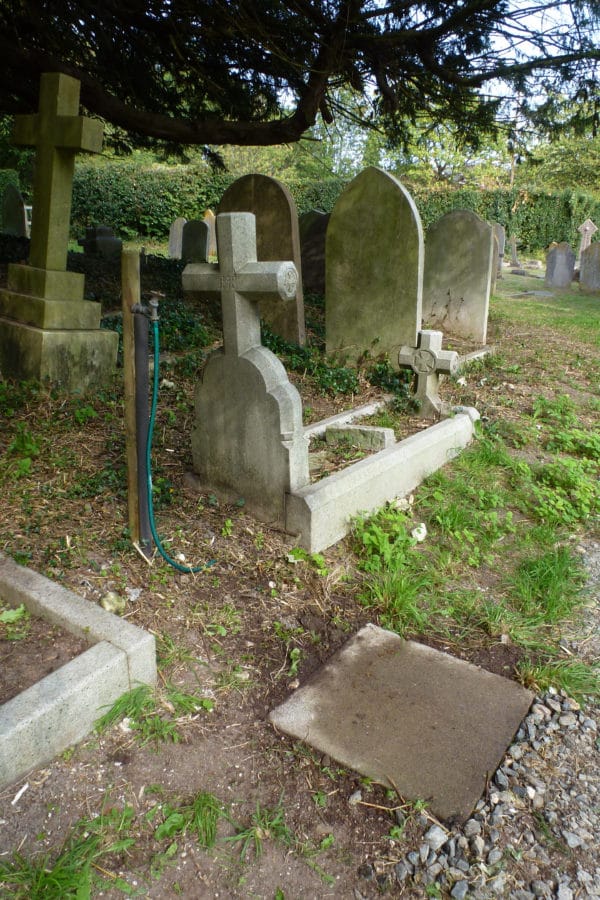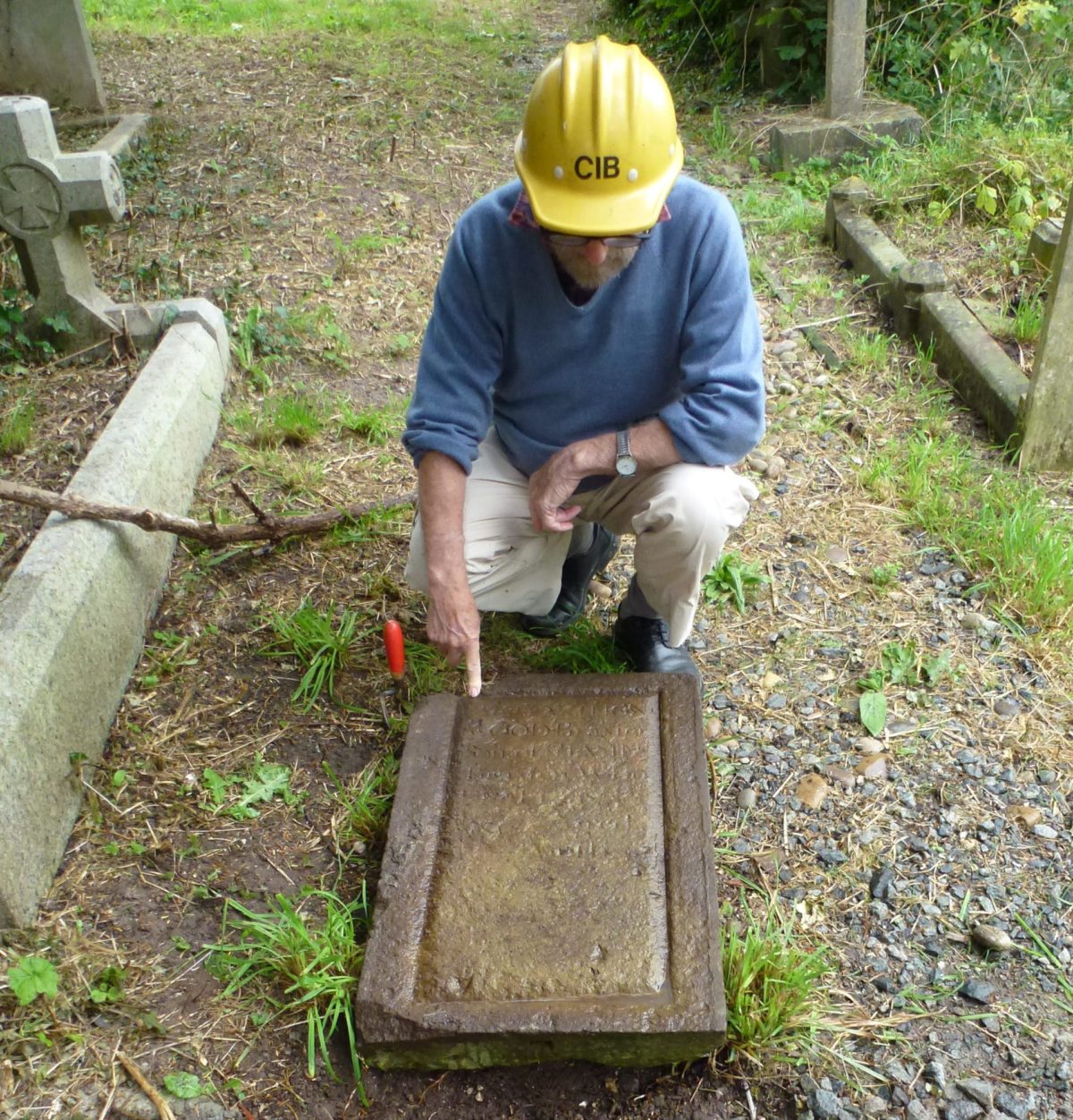Brian Philp, Director of the Kent Archaeological Rescue Unit writes:
Following your report that the gardener had uncovered a large stone block in the churchyard of Keston Parish Church, which he thought was Roman, you very wisely contacted me so this could be examined. This was done in late August.


Our inspection suggested that this was the back of a reused headstone, which on close inspection had been used as a cover for a stopcock for an adjacent water hosepipe. (Next to the large Yew tree). On carefully turning it over we were delighted to find a rather worn inscription. We could just make out the name Wood and the word brazier. Its style suggested to me a date of about 1750.
After replacing the stone my team later carried out some research. This revealed that a John Wood, who was described in the old register as a brazier, had been buried in the churchyard in 1742. He is listed as from Cudham Lodge. A brazier made copper vessels for a range of uses working from copper over a brazier, hence the name. We later moved the headstone near to the door to the church hall while we consider where to put it, and replaced it with a modern slab.

This little event suddenly alerts us all to a man who must have lived and died in the Keston area nearly 280 years ago, but who like so many other good parishioners has fallen from memory. He had disappeared, like perhaps another 1,000 others resting in the churchyard, from memory only now being suddenly revealed by accident. It reminds us that these were all living people, with families, friends, jobs and important lives taking an active part in the community in exactly the same way as we do today.
Sadly, it also means that we do not now know exactly where he was buried, but he will be in good company.